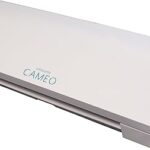To excel in Lesson 7 homework on scientific notation, grasp the fundamentals of exponents and decimal point movement. Simplify large and small numbers efficiently using \(a imes 10^{b}\). Multiply with ease by adding exponents, aiding various fields with precise results. Divide by subtracting exponents for precise calculations. Intriguingly, adding/subtracting involves aligning coefficients and adjusting exponents for proficiency. Maximize your potential by mastering these computational skills.
Key Takeaways
- Apply scientific notation for homework efficiency.
- Perform computations using exponent rules.
- Ensure correct exponent operations in calculations.
- Practice adding, subtracting, multiplying, and dividing.
- Verify alignment of exponents for accuracy.
Understanding Scientific Notation
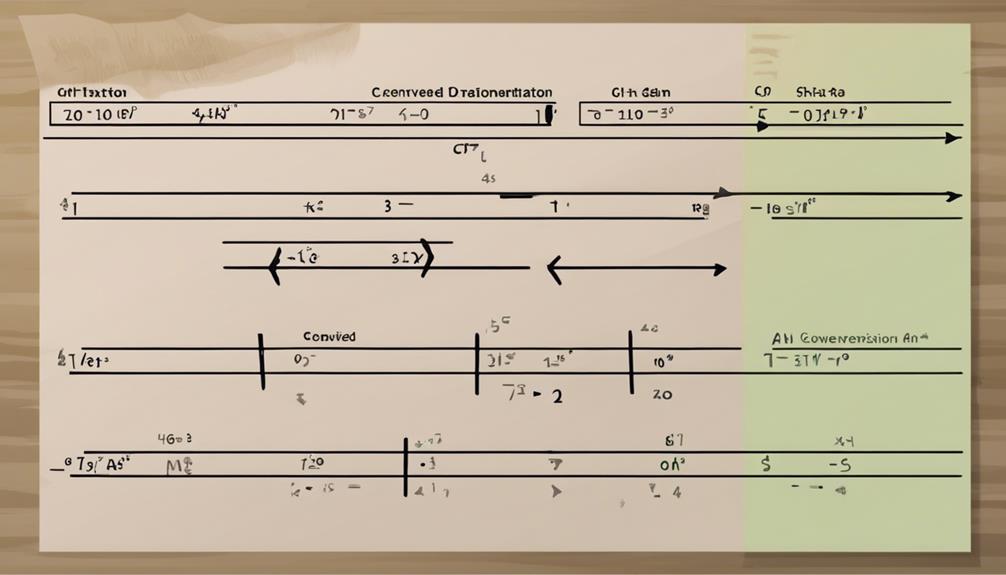
Understanding scientific notation makes it easier to work with very large or very small numbers in a more concise and efficient way. By using exponents, you can simplify large numbers into a shorter form that's easier to manage.
For example, instead of writing out 6,000,000, you can represent it as 6 x 10^6. This condensed format not only saves space but also simplifies calculations involving these numbers.
Exponents indicate how many times a number is multiplied by itself. In scientific notation, the exponent shows how many places the decimal point needs to be moved to restore the number to its original size. This method helps prevent errors that can occur when dealing with numerous zeros in standard numerical notation.
When working with very large numbers, understanding exponents and scientific notation can streamline calculations and reduce the risk of mistakes. By breaking down numbers into a more manageable format, you can perform operations more efficiently and with greater accuracy.
Converting Numbers to Scientific Notation
Convert large or small numbers into scientific notation to simplify calculations and improve efficiency. Scientific notation benefits by representing numbers in the form of \(a imes 10^{b}\), where \(a\) is a number between 1 and 10 and \(b\) is an integer. This method makes it easier to work with extremely large or small numbers, allowing for quick and accurate computations.
One common misconception about scientific notation is that it's only used for very large numbers, but it's equally valuable for small numbers. By converting numbers into scientific notation, you can easily compare their magnitudes and perform operations like addition, subtraction, multiplication, and division more efficiently.
Another misconception is that scientific notation is complex and unnecessary, but in reality, it simplifies calculations and reduces the chances of errors due to working with unwieldy numbers. Embracing scientific notation can greatly streamline your mathematical tasks and enhance your problem-solving skills.
Multiplying Numbers in Scientific Notation
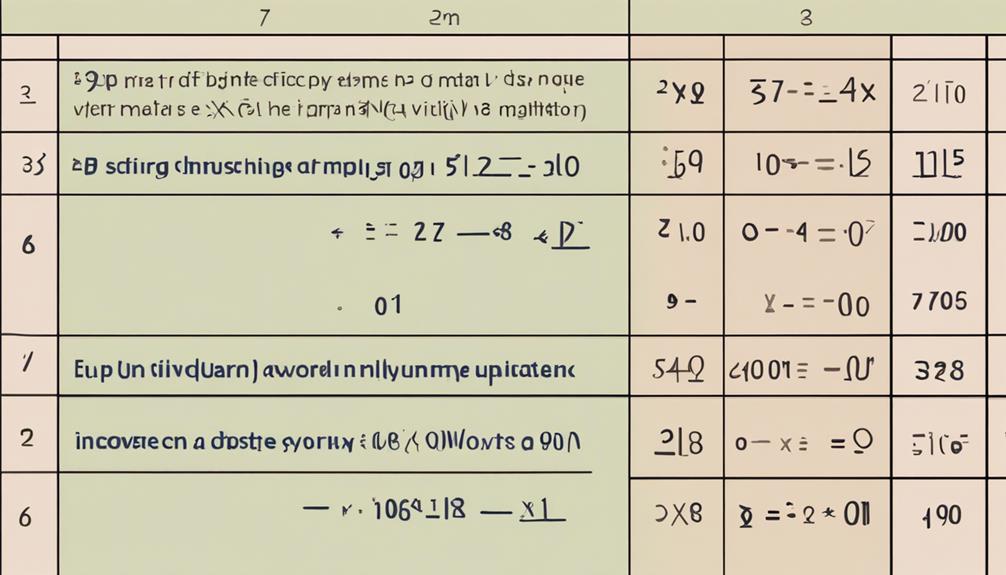
To multiply numbers in scientific notation efficiently, simply multiply the coefficients and add the exponents.
When multiplying decimals in scientific notation, it's important to remember the rules of multiplying numbers with different exponents.
For instance, when you have (3.2 x 10^4) * (5.1 x 10^2), you'd first multiply 3.2 and 5.1 to get 16.32. Then, add the exponents 4 and 2 to get 6, resulting in the answer 16.32 x 10^6.
This process showcases the application of exponential notation in multiplying numbers in scientific notation.
Understanding exponential notation applications is essential for various fields such as physics, chemistry, and engineering.
By mastering the multiplication of numbers in scientific notation, you can accurately calculate quantities that involve large or small values.
This skill is particularly useful when dealing with measurements in scientific experiments or astronomical observations where numbers can span several orders of magnitude.
Dividing Numbers in Scientific Notation
When dividing numbers in scientific notation, remember to divide the coefficients and subtract the exponents.
Dividing decimals in scientific notation involves a straightforward process. Begin by dividing the coefficients just like you'd with regular numbers.
For example, when dividing 3.2 x 10^4 by 8 x 10^2, divide 3.2 by 8 to get 0.4 as the new coefficient. Next, subtract the exponents. In this case, subtract 4 from 2 to get x 10^2.
As a result, the division of 3.2 x 10^4 ÷ 8 x 10^2 gives 0.4 x 10^2. This is the essence of exponential division in scientific notation.
Adding and Subtracting in Scientific Notation
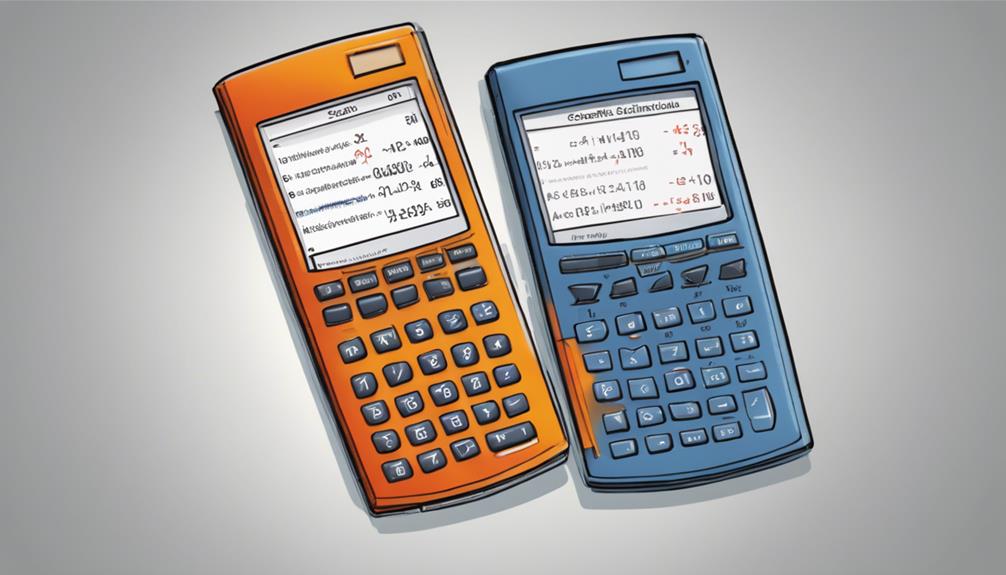
Mastering addition and subtraction in scientific notation requires combining coefficients and adjusting exponents accordingly. When adding numbers in scientific notation, make sure that the exponents are the same. Simply add or subtract the coefficients while keeping the exponent unchanged.
For instance, when adding 3.2 x 10^4 and 1.5 x 10^4, add the coefficients to get 4.7 x 10^4.
Subtraction with scientific notation follows a similar principle. The key is to align the exponents before performing the subtraction.
For example, when subtracting 6.8 x 10^5 from 9.4 x 10^5, first align the exponents to get 0.94 x 10^6 – 0.68 x 10^6, resulting in 0.26 x 10^6.
In scientific notation addition and subtraction, focus on manipulating the coefficients while keeping the exponents in check. By practicing these computations, you'll become adept at swiftly adding and subtracting numbers expressed in scientific notation.
Remember to double-check the alignment of exponents and apply the appropriate operations to enhance your skills in working with scientific notation.
Applying Scientific Notation in Real-World Problems
In real-world scenarios, applying scientific notation allows for efficient representation and computation of extremely large or small numbers. Practical applications of scientific notation can be found in various fields such as astronomy, physics, and economics. For instance, in astronomy, distances between celestial bodies or the mass of stars are often expressed in scientific notation due to their immense sizes.
In physics, calculations involving atomic particles or the speed of light benefit greatly from using scientific notation to manage the vast range of values involved. Problem-solving techniques using scientific notation help simplify complex calculations. By converting numbers into scientific notation, you can easily multiply, divide, add, or subtract values without dealing with multiple zeros.
This streamlined approach saves time and reduces the likelihood of errors in computations. When faced with real-world problems that involve extremely large or small numbers, applying scientific notation is a valuable tool that enhances accuracy and efficiency in solving mathematical challenges.
Mastering Scientific Notation Calculations
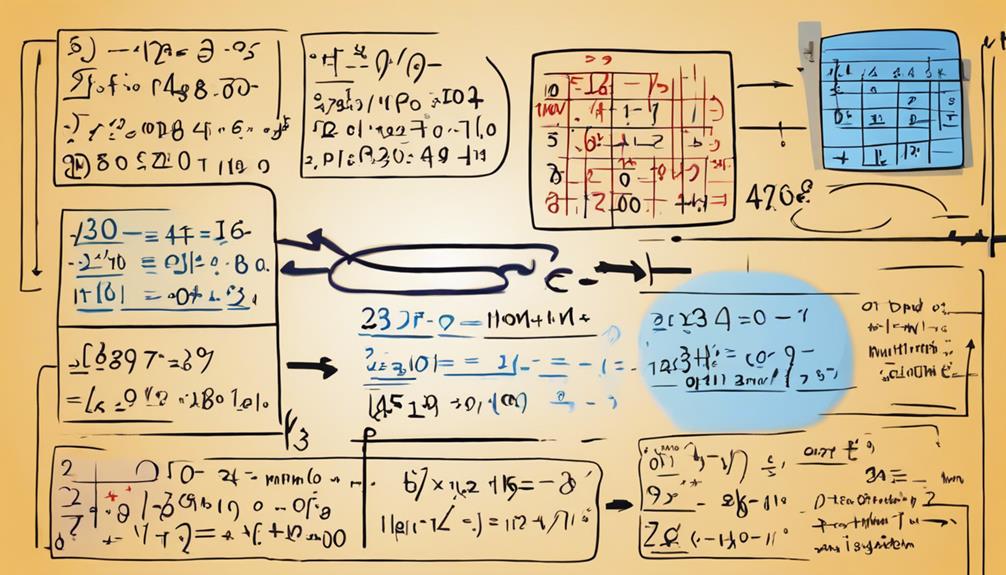
Essential compute complex values by mastering calculations in scientific notation. By understanding how to manipulate numbers expressed in scientific notation, you can tackle a wide range of mathematical problems with ease.
Practical applications of mastering scientific notation calculations can be found in fields like astronomy, physics, and engineering, where dealing with extremely large or small numbers is common. By converting numbers into scientific notation, you simplify calculations and make it easier to work with data involving significant digits.
Common mistakes when mastering scientific notation calculations include errors in converting between standard form and scientific notation, misplacing decimal points, and misunderstanding the rules for multiplying or dividing numbers in scientific notation. It's vital to pay attention to details and follow the correct procedures to avoid inaccuracies in your calculations.
Practice is key to improving your skills in manipulating numbers in scientific notation efficiently. Remember, mastering these calculations can enhance your problem-solving abilities and make math tasks more manageable in various real-world scenarios.
Conclusion
You have successfully completed Lesson 7 homework practice on computing with scientific notation.
By understanding how to convert, multiply, divide, add, and subtract numbers in scientific notation, you have mastered this important mathematical concept.
Keep practicing and applying scientific notation in real-world problems to continue strengthening your skills.
Well done!




